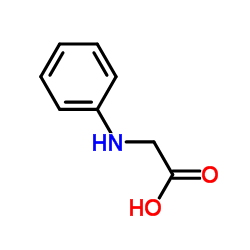N-phenyliminodiacetic acid as an etchant/primer for dentin bonding.
G E Schumacher, J M Antonucci, P S Bennett, J E Code
Index: J. Dent. Res. 76(1) , 602-9, (1997)
Full Text: HTML
Abstract
Effective composite-to-dentin bonding has been achieved by the sequential use of dilute aqueous nitric acid (HNO3) and acetone solutions of N-phenylglycine and a carboxylic acid monomer, e.g., p-PMDM. Both the HNO3 pre-treatment and the surface-initiated polymerization that results from reaction of infused N-phenylglycine and PMDM have been identified as key elements of this bonding system. In this study, N-phenyliminodiacetic acid, a unique imino acid derivative with acidic and chelating potential, was evaluated as a dual etchant/primer for dentin bonding. A randomized, 2(3) factorial design was used to study the effects of 3 factors on tensile bond strength (TBS): conditioner (HNO3 vs. no HNO3), primer (N-phenylglycine vs. N-phenyliminodiacetic acid), and primer solvent (acetone vs. acetone:H2O). The three-step protocol consisting of HNO3, N-phenylglycine in acetone, and PMDM in acetone served as the control. The hypothesis tested was that N-phenyliminodiacetic acid could act as both an effective conditioner (i.e., etchant) and as a primer. Two-step protocols that included only N-phenyliminodiacetic acid and PMDM were compared with the control. TBS (n = 10 per group) were determined after 24-hour storage in H2O and analyzed by ANOVA and Duncan's Multiple Range test. Primer solvent was critical for obtaining significant bonding to dentin when HNO3 was omitted. N-phenyliminodiacetic acid in acetone without prior HNO3 etching gave the lowest ranking mean TBS (95% CI, 3.8 +/- 1.9 MPa). In contrast, the mean TBS obtained from samples treated with N-phenyliminodiacetic acid in acetone:H2O without prior HNO3 etching was not statistically different (p > 0.05) from the mean TBS for the control (95% CI, 9.3 +/- 1.8 and 9.8 +/- 1.9 MPa, respectively). Due to its dual function as etchant and primer, N-phenyliminodiacetic acid in acetone:H2O provides for a simplified bonding technique that yields strong, PMDM-mediated adhesion to dentin.
Related Compounds
| Structure | Name/CAS No. | Molecular Formula | Articles |
|---|---|---|---|
 |
N-Phenylglycine
CAS:103-01-5 |
C8H9NO2 |
|
Analyte-induced photoreduction method for visual and colorim...
2015-06-16 [Anal. Chim. Acta 879 , 111-7, (2015)] |
|
Notch2 controls prolactin and insulin-like growth factor bin...
2014-01-01 [PLoS ONE 9(11) , e112723, (2014)] |
|
Notch signaling governs phenotypic modulation of smooth musc...
2014-11-01 [Vascul. Pharmacol. 63(2) , 88-96, (2015)] |
|
Asymmetric strecker synthesis of alpha-amino acids via a cry...
2001-04-19 [Org. Lett. 3(8) , 1121-4, (2001)] |
|
Oncogenic deregulation of NKL homeobox gene MSX1 in mantle c...
2014-08-01 [Leuk. Lymphoma 55(8) , 1893-903, (2014)] |